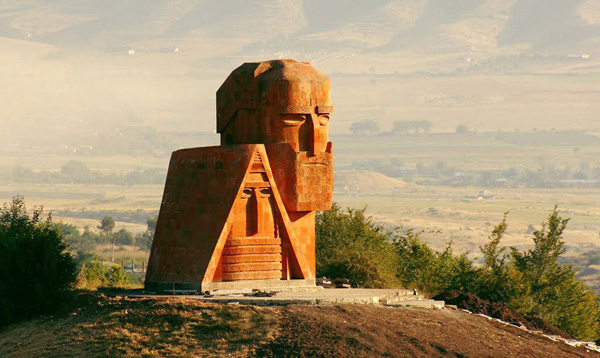February 20 of this year marks the 30th anniversary of the commencement of Artsakh Movement. Since February, 1988, a process was launched, the result of which is today’s Artsakh’s statehood. Nevertheless, in 1988, putting the vital need of reuniting Armenia into practice was not the first experience. The manifestation and requirement of that complaint raised in June, 1965, remained in Artsakh history as “13’s letter”. At that time the intelligentsia of the region applied to Moscow with a long letter, under which 13 different leaders of the region signed, tells the co-author of the letter, writer and publicist, Maxim Hovhannisyan (others have passed away already). “Everything started as follows. I met with the employee of the village administration, Lazr Gasparyan on the corridor of the building of the Writers’ Union of Council of the Region, who showed me the regular directives of the region of the 5 years, where Azerbaijan’s discrimination towards Karabakh was mirrored. Here the idea of applying to Central Committee of the Communist Party of the Soviet Union, USSR Supreme Council and The Council of the Ministers originated, representing the heavy situation in the region and regarding the unity with Armenia as a correct solution in that condition. With all this we were also conscious what consequences could this bring forth”, he remembers. Maxim Hovhannisyan emphasized that a lot of people were suggested to sign the letter. However, not all believed in the possibility of seceding from Azerbaijan, and the others, according to him, perhaps did not want to put their career under threat: “I also remember, when we invited the chief editor of “Soviet Karabakh” regional newspaper, Lazr Gasparyan to sign, he read and told after signing: “I not only signed this letter, but also the order of my dismissal.”
Then, as a response, Moscow promised to send a committee to get acquainted with the situation at place. The members of the committee came, who were escorted by persons appointed from Baku, who reported to the Central Committee, that the leadership of Azerbaijan would correct all shortcomings and omissions. “After that the phase of persecutions and violence against us commenced. Us, the people who had signed the letter, were subjected to party sanctions, dismissals. A part of us were deprived of the opportunities of working in the region at all, some of us left for Armenia, and the ones who stayed in Karabakh, remained under the spotlight of the special services. And here is how Azerbaijan diminished the raising of the issue of Artsakh Armenians. Nevertheless, this already became the basis for evolving an irreversible fight in 1988 and national awakening”, concludes Maxim Hovhannisyan.
Davit ABAGHYAN
























































